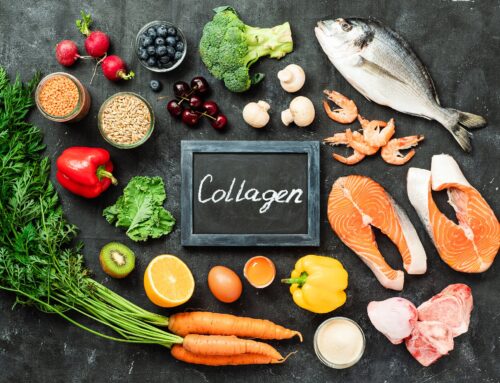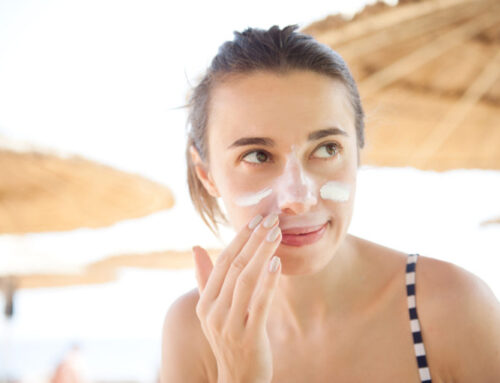
Stretch marks, those subtle streaks that appear on the skin, often as a result of rapid weight gain, pregnancy, or growth spurts, can be a source of concern for many individuals. While completely eliminating stretch marks may be challenging, there are several effective treatments available to help reduce their appearance. Let’s dive into the basics of stretch marks and explore some common treatment options:
Understanding Stretch Marks and Common Treatment:
Stretch marks, also known as striae, occur when the skin stretches beyond its normal capacity, causing the collagen and elastin fibers to rupture. This leads to the formation of thin, reddish or purplish streaks that eventually fade to a lighter color over time.
Stretch marks, also known as striae, are common skin lesions that appear after your skin quickly stretches or shrinks. They often happen due to pregnancy, weight gain, weight loss and bodybuilding. Treatment options include laser skin resurfacing, dermabrasion, microneedling and retinol creams.
Types of Stretch Marks
There are two main types of stretch marks:
-
Striae rubrae: These are new stretch marks that are red or purple in color.
-
Striae albae: These are older stretch marks that have faded to white or silver in color.
Causes of Stretch Marks
Stretch marks are caused by the rapid stretching or shrinking of the skin. This can happen due to:
-
-
Pregnancy: The rapid growth of the abdomen during pregnancy can lead to stretch marks on the belly, hips, breasts, and thighs.
-
Weight gain: Significant weight gain can stretch the skin, resulting in stretch marks on various body areas.
-
Weight loss: Rapid weight loss can cause the skin to shrink, leading to stretch marks on the arms, legs, and abdomen.
-
Bodybuilding: Bodybuilders may develop stretch marks on their arms, legs, and back due to rapid muscle growth.
-
Hormonal changes: Hormonal imbalances, such as those experienced during puberty, can contribute to the development of stretch marks.
-
Genetics: Some individuals may be more prone to developing stretch marks due to genetic factors that affect the skin’s elasticity.
-
Prevention of Stretch Marks
While it may not be possible to completely prevent stretch marks, certain measures can help minimize their appearance:
-
Maintain a healthy weight: Gradual weight gain or loss can allow the skin to adjust slowly, minimizing the risk of stretch marks.
-
Stay hydrated: Drinking plenty of water can help to improve skin elasticity and reduce the likelihood of stretch marks.
-
Use moisturizing creams or oils regularly: Applying creams or oils with moisturizing and nourishing ingredients, such as vitamin E, aloe vera, and cocoa butter, can help hydrate the skin and improve its elasticity, making it less visible, but not healing it.
-
Eat a nutritious diet: Consuming a nutrient-rich diet that supports skin health, including foods rich in vitamins A, C, and E, can promote skin elasticity.

Topical Creams and Lotions:
Topical treatments containing ingredients like retinoids, hyaluronic acid, and vitamin C can help improve the appearance of stretch marks. These ingredients promote collagen production and skin cell turnover, which can gradually reduce the visibility of stretch marks.
Laser Therapy:
Laser treatments, such as fractional laser therapy, target the affected area with high-energy light. This stimulates collagen production and improves the texture and color of stretch marks. Multiple sessions may be required for optimal results. Laser treatments, specifically fractional laser therapy, direct concentrated high-energy light towards the targeted area. This precision triggers an increase in collagen production, which subsequently works to enhance both the texture and color of stretch marks. It’s important to note that achieving the most favorable outcomes may necessitate undergoing multiple sessions.
Microdermabrasion:
Microdermabrasion involves exfoliating the top layer of skin using tiny crystals or a diamond-tipped wand. This process encourages the growth of new skin cells and can help reduce the appearance of stretch marks over time. Microdermabrasion entails the gentle exfoliation of the skin’s outermost layer using diminutive crystals or a wand with a diamond-tip. This technique actively promotes the regeneration of fresh skin cells, ultimately contributing to the gradual reduction in the visibility of stretch marks over a span of time.
Also read: Choosing the Right Skincare Professional: Nurse, Esthetician, or Both?

Microneedling:
Microneedling involves creating controlled micro-injuries in the skin using fine needles. This stimulates collagen production and triggers the skin’s natural healing process, leading to smoother skin texture and faded stretch marks. Microneedling encompasses the meticulous generation of controlled micro-injuries in the skin through the use of fine needles. This meticulous process sparks the amplification of collagen production and initiates the skin’s intrinsic healing mechanism. Consequently, this leads to the refinement of skin texture, resulting in a smoother complexion, and contributes to the gradual fading of stretch marks.
Also read: How Stress Affects the Skin
Treatment Options for Stretch Marks and Common Treatments
While stretch marks cannot be completely removed, several treatment options are available to help reduce their appearance. These include:
-
Laser skin resurfacing: Laser skin resurfacing uses a laser to remove the top layer of skin, which can help to improve the appearance of stretch marks.
-
Dermabrasion: Dermabrasion uses a rotating abrasive brush to remove the top layer of skin. This can help to improve the appearance of stretch marks.
-
Microneedling: Microneedling uses tiny needles to create microscopic punctures in the skin. This triggers the body’s natural healing response, stimulating the production of collagen and elastin, which can help to improve the appearance of stretch marks.
-
Retinol creams: Retinol creams contain vitamin A, which can help to stimulate collagen production and improve skin elasticity.
-
Other topical treatments: Some over-the-counter creams and lotions claim to reduce the appearance of stretch marks, but the evidence for their effectiveness is limited.
Conclusion
Stretch marks are a common skin concern that affects many individuals. While they cannot be completely removed, several treatment options are available to help reduce their appearance. By understanding the causes of stretch marks and taking steps to prevent them, you can minimize their impact on your skin’s appearance.





